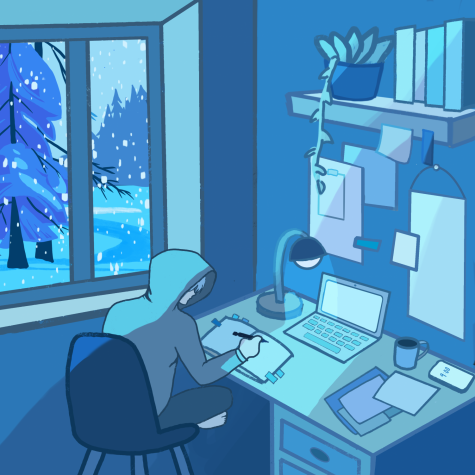
This year has been different to say the least. Whether it is attending virtual classes or coming in for hybrid learning with less than half of the student body, students know this year has been far from an ordinary school year. The same applies to snow days. Whenever there is a slight chance of snow on the forecast, it causes excitement as students are hopeful for a day off. With everything now becoming virtual, there is a lot up to interpretation about these snow days and what the district should do about them. Some people believe that, because we now know how to have an asynchronous day, or even a synchronous day on Zoom, we should use these options rather than receive a day off. Some people think that we should get these days off because it is difficult for everyone to connect to the internet during severe snowstorms, and a day off makes everything easier.
Earlier this year, we had a storm that we knew was going to produce a lot of snow. The school administrators decided to have everyone stay home and perform classes synchronously on the day prior to the storm. This was smart, because if the storm moved earlier in the day, then nobody would have to try to leave school going through the snow. They also decided to make the day of the storm asynchronous, allowing students to use the entire day to complete their work. This was controversial, as there was a chance that students would lose power, causing them to be unable to do the asynchronous work. I believe that the district should have made this a full day off, covering all of their bases and decreasing the chances of a majority of people complaining about power outages.
Going forward, I believe that the district should try to plan ahead like they did for the last storm and keep everyone at home for as long as possible. In years past, we have had storms where buses weren’t able to get people home until late at night. Teachers also don’t live nearly as close to school as most of the student body, so keeping them at home would be beneficial as they don’t have to deal with poor driving conditions and traffic, causing them to be late to class or to drive in dangerous conditions. The day of or before the storm should be performed synchronously, with everyone at home. No one should have to go to school when there is a threat of a large storm that night, keeping everybody safe. The day after the storm should be based on the severity of the storm; the district should call it the day before, saying that it will be either an off day or asynchronous. If they can, the district could wait until the storm starts to make the call based on how much it is snowing and how quickly. They would also have more time to look at the radar, as the closer we get to the storm, the more accurate the radar is. Whenever they know there is a high chance that the majority of the district will lose power, they should call the day and make it completely off with no asynchronous work. If there is a slight chance students could lose power for a short amount of time, but there is no real threat to the students’ ability to finish their work, then they should make it asynchronous. If there is going to be a tiny bit of snow, but a high chance of poor driving conditions, then they should make the day synchronous over Zoom with teachers at home.
The school district has been introduced to a new and interesting method of handling snow days, and they should take advantage of this. They should be able to register more days as asynchronous days if the storm does not seem too bad, allowing for teachers to decide how much work students should have. This opens the door for the school to use less of their built-in snow days, allowing for school to properly end on time in June.




